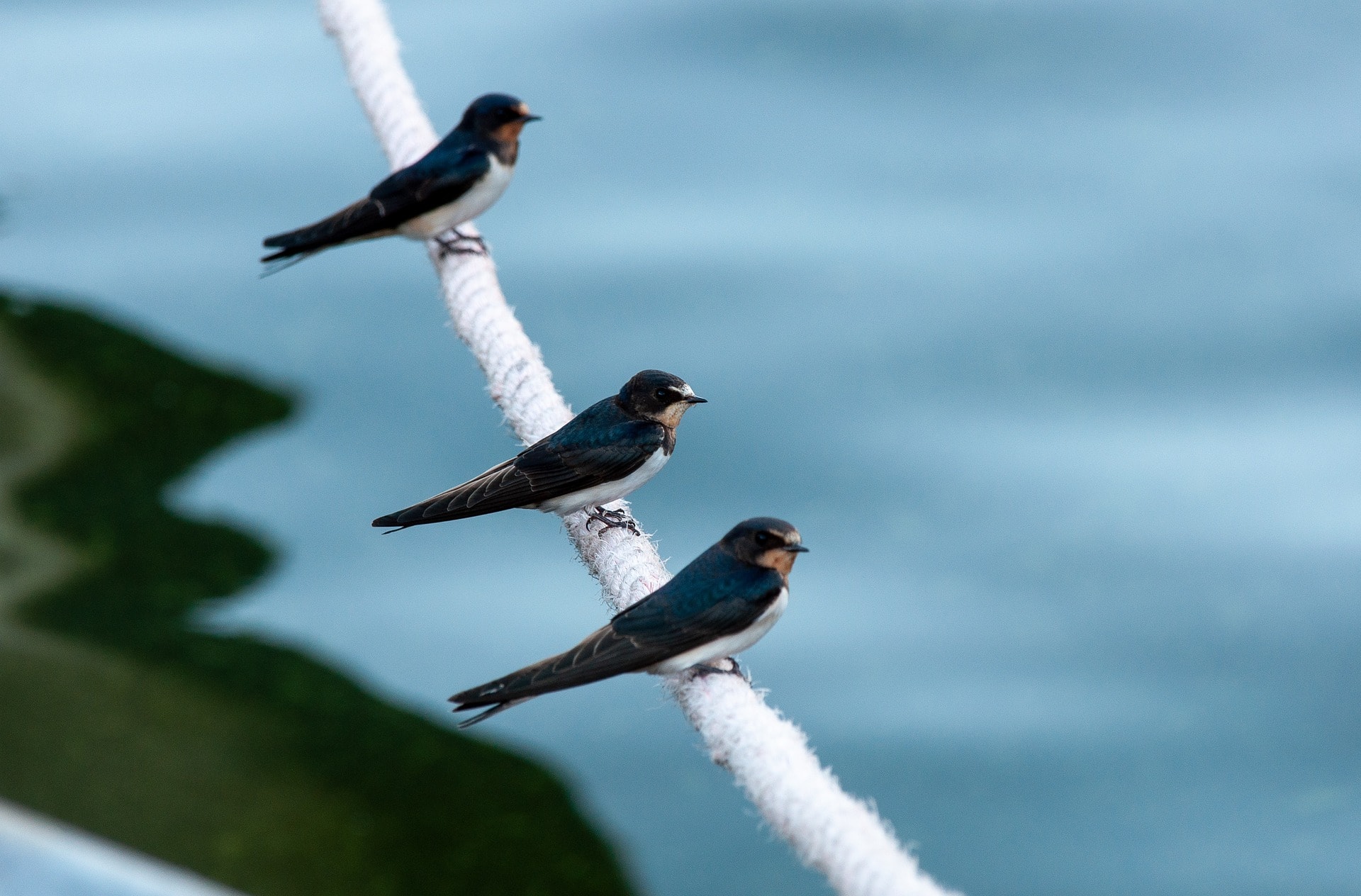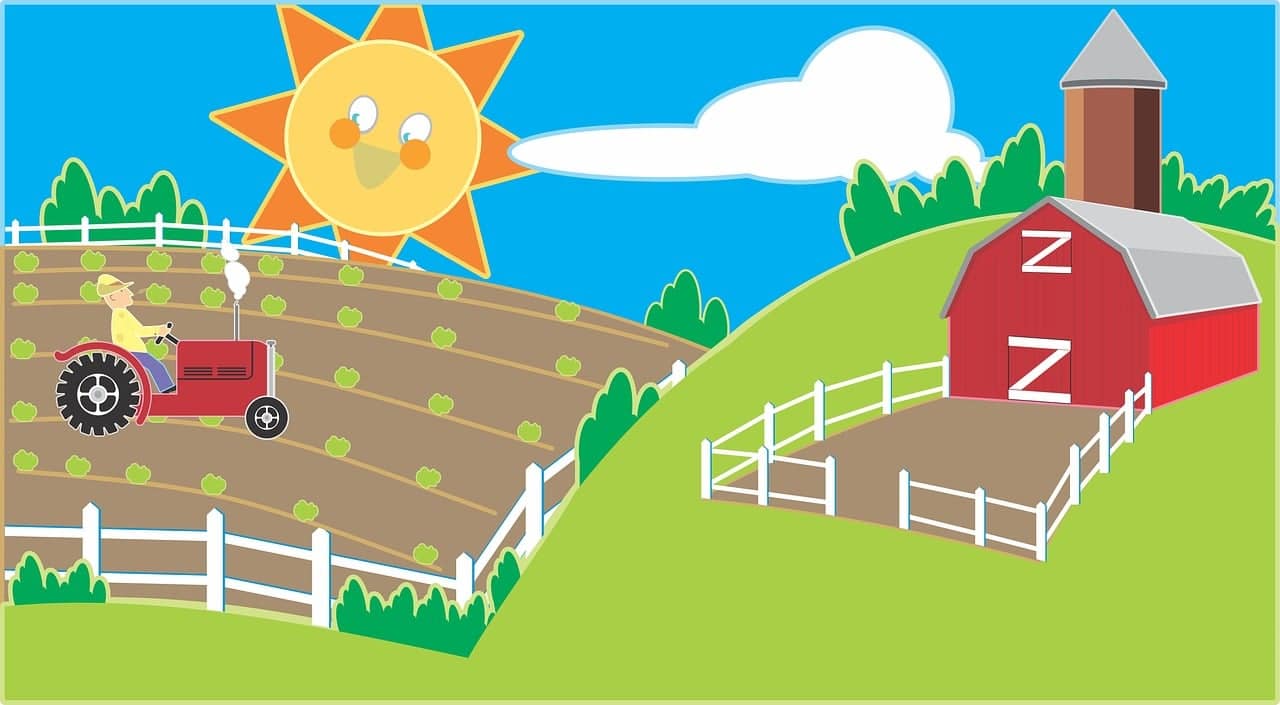This post may contain affiliate links. Probably doesn’t, but it might. It doesn’t cost you anything extra but if you use these links to buy something, we may earn a commission.
Table of Contents
5 Tips to make your property a Swallow Haven
Swallows, Hirundinidae family, are graceful, beautiful, fascinating to watch, and they eat thousands of insects daily. They are distinctive for their narrow and sharply pointed wings. Some of the better known of the 90 different varieties of swallows have forked tails. Their gleaming steel blue to blue top feathers and cream to rust colored breast feathers make swallows natural beauties. Swallows are considered song birds, although their songs are more like short calls. A grouping of swallows can be called a flight, a gulp, a swoop, a kettle, or a richness.
Why have swallows around?

We love having swallows around for their ability to keep the flying insect population under control. They eat a lot of flies and aphids—aphids can be quite damaging for many crops. The ones staying with us each year are barn swallows. Since we have a barn, it makes sense. The barn swallows return each year from their southern winter migration to the nests where they fledged.
The barn swallow (Hirundo rustico) is the most widespread of any of the swallows, found in Asia, Europe, Africa, and the Americas.
Swallows follow an annual migratory path
Our barn swallows migrate to South America each winter, a round trip of about 9000 miles. European swallows migrate to Africa. Warmer climates for the winter are essential for the birds to thrive, as they need the constant presence of insects. Since the swallows can live a few years, there generally are birds who have previously made the trip to guide the young ones. Swallows range from 5 to 7 inches in length, and about half an ounce to three quarters of an ounce in weight—not very large!
Others in the swallow family include chimney swifts, cliff swallows, house martins, purple martins, and tree swallows. The swallows of San Juan Capistrano are cliff swallows (Petrochelidon pyrrhonota), a subgroup of swallows.
Swallows migrate as far north as the southern part of Alaska and British Columbia and throughout fall of the United States and most of Nova Scotia, Quebec, and Ontario. They can arrive as early as late January in southern California or as late as mid-to late-May in Alaska.
Swallows are considered aerial feeders, snatching their food as they fly along. Since swallows are insectivores, they do not visit bird feeders. They do not perch and eat. They also drink on the wing, snatching a sip of water as they fly over a stream or puddle. Bathing o
What swallows need is an environment that is conducive to a good insect population.
Five tips to encourage swallows:

1. Avoid pesticides and insecticides
Swallows are very sensitive to these chemicals. Chemicals can affect the success of hatching as well as the life span of the birds.
2. Let the grass grow a bit taller
Open grassy areas where the birds can skim over and nab flying insects provides a welcome dining area. Because the swallows are so agile in their flying, they prefer open areas for their maneuvers. They will perch on utility wires, clotheslines, or antennas on a roof. From there, the birds swoop off after their prey.
3. Swallows prefer large, natural areas of water, such as a lake or pond
They will skim over the water and get a sip rather than perch and drink. Larger, flatter, bird baths can be an acceptable substitute. Swallows will fly through sprinklers to get a drink. If you live close to a stream or pond, you have a much better chance of attracting swallows.

4. Many swallows will nest in bird houses
Some may nest in a hole in a tree or build a nest in the fork of a tree. Others, such as barn swallows, build a cup shaped nest under a building eave or along a roofline. Swallows use mud and straw to build up their nests, so a muddy puddle is a good thing from a swallow point of view. If it is an extra dry season in the spring when the barn swallows arrive, create a mud puddle for them to use for their building materials.
5. Patience!
It can take several years for swallows to decide your location is acceptable. The birds will check out locations as they migrate and when they return from their trip south. If they return from their migration and the home site is full, then the young ones will scout out a new location. A pair has to decide together that a site is good for nesting and living.
We are fortunate to have barn swallows, Hirundo rustica, that come every year to our farm, arriving about April 22-25 and departing August 22-25. We usually see one or two birds almost a week ahead of the others. Acting as scouts, these birds are males and will confirm to the others that there is still a good nesting area and abundant food. We have plenty of insects for them to eat!
Preferred nesting spots for barn swallows

The birds have well established nesting spots. They have used these nesting areas for close to 100 years. Even so, the swallows refurbish the nests every spring. After the birds arrive, they spend about two weeks refurbishing or building new nests. They clean out an old nest, repair any thin areas, build up the edges that were worn down. We try to minimize the foot traffic in the nesting area, but the birds soon learn they can ignore us.
Although we put up beams in another area on the opposite side of the barn from the current nesting area, the barn swallows stay devoted to this designated spot. There can be as many as twelve active nests in this one area of about 150 square feet. Both male and female swallows work on building the nests.
Although we do not have a stream or pond on the farm property, there is one about ¼ mile away. We have never seen a swallow drink from the bird bath. We do see the swallows visiting mud puddles in order to build up their nests. It’s possible that they visit the mud puddles and drainage ditches for water as well.
The swallows are very social, flying acrobatically together, swooping up and down and around each other. They weigh less than an ounce and are about 5-7 inches long. A single barn swallow can eat about 25,000 insects each month. No wonder we love these birds!
Once the babies hatch, both parents are busy feeding those demanding mouths. The young are featherless and look rather prehistoric with their disproportionately large mouths. The babies grow from nestlings to flying in three weeks. It becomes a fledgling at day 20, when it acquires flight feathers, and the next day the bird is flying! The parents will continue to feed the fledglings for about a week, and then the young are on their own.
Generally, the birds hatch two sets of nestlings each summer. The male will share approximately 25% of the incubation time with his mate. Usually there are four to five eggs in each nest, but sometimes as few as two.
Inevitably, there is one nest of fledglings that learns to fly just a day before the southern migration begins. We always wonder how they fare. The birds take frequent stops, especially early on in the migration, so that the youngest have a chance to build their stamina.
Swallows communicate with chirps

The adults chirp frequently to each other, communicating what is going on. The flight of swallows is very cooperative among the swallows, flying and perching together. Once the fledglings are flying, all of the adults accept them as part of the flight.
The adults are very protective of the nests, and they will dive bomb any creature that comes too close. Swallows will chase off other birds from the nesting area and their preferred perching areas. The swallows are fierce in displacing the sparrows and starlings. I have watched the swallows harass any cats in the area by diving at them. The swallows are so fast, that the cats are not able to catch them, but it is a moment that always makes me hold my breath!
Although swallows are considered songbirds, their sounds are more like calls and chirps as they communicate with each other. The different calls express excitement, concern, convey an alarm for the presence of a predator, and courtship. The babies make begging calls to get as much food as possible. A typical call is a somewhat musical twittering.
Spring arrival and fall departure
Our barn swallows have a call when talking to or at us. They seem to understand that we mean them no harm, but sometimes there is an urgency to their call which says we are too close to the nest. As the babies age and start to fly, the parents are less concerned about our presence.
Swallows are elegant and graceful, and it is a delight to watch them. We notice immediately the reduction in insect bites when the birds arrive in the spring. Unfortunately for us, we notice immediately when the swallows are gone, as the insect presence seems to explode.
The barn swallows leave us in late summer, here in Delaware, and fly to South America, where they spend the winter. We notice immediately that there are more insects around!
In the spring, they finish their 9000-mile trip by returning to where they fledged. About half of the birds stay here, and the rest look for new quarters. Swallows can live about four years, although they have been known to live as long as 10 years. It is possible to have several generations in one flight of swallows.
There are few natural predators for swallows, but peregrine falcons are one of them. Extended droughts reduce or dry up water sources as well as food sources for the swallows. Volatile weather makes for uncertain food and water. Human activities such as spraying chemicals, drones, and light aircraft take a greater toll on swallows than predators.
Although it is not recommended to try to raise a baby barn swallow that has fallen out of the nest, Carol Kent tells a beautiful story of success with raising a young swallow in Hamburger and French Flies: A Barn Swallow’s Story. Most young that have fallen out of the nest do not survive the fall.
If you do find a baby swallow on the ground, you can return it to its nest (if you can identify which nest the baby bird came from). If the baby is injured or you cannot return it to its nest, contact your nearest bird rescue. For us, that is Tri-State Bird Rescue.
The Swallow: A Biography, by Stephen Moss, takes you through a year in the life of a British swallow and its migration to Africa.
It is becoming harder to count on a natural hospitable environment for swallows. It is well worth making the effort to create a welcoming habitat. Having swallows around is beneficial for you and the birds are a wonder to watch!
Additional resources:
Here is some information on the 8 most common types of swallows and each has its own nesting preferences. For more information on each of the different types of swallows, check out Birds & Blooms.
To learn more about barn swallows and migration, you can follow sightings, breeding, and migration map on All About Birds.





